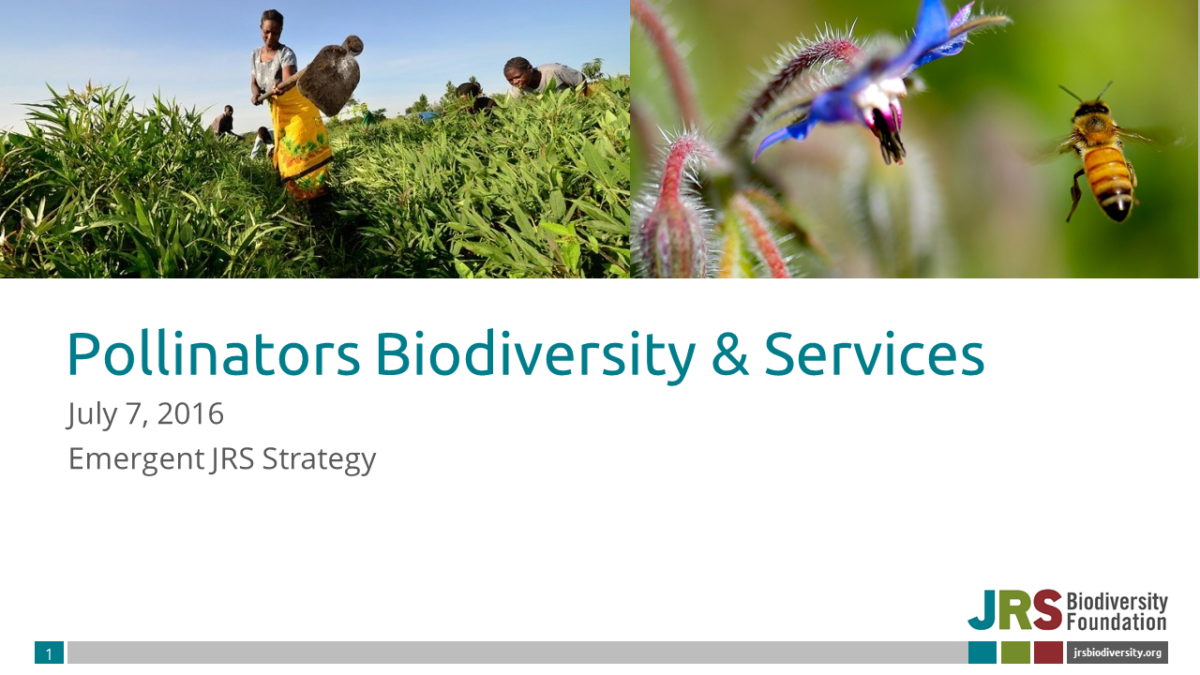There are many variants on the saying that you don’t actually want to see how the sausage is made, and this is often applied to law and policy. We hope that seeing how foundation strategy is made is a little more appetizing, though it may be no less messy. In the fall of 2016, JRS continued the evolution of our approach that first began in 2005. We chose to maintain our focus on building capacity for biodiversity informatics in sub-Saharan Africa and to do so by ensuring that capacity is built to match demand for knowledge. Pollinator biodiversity and freshwater biodiversity are two domains where we believe the ongoing and growing need for biodiversity knowledge can sustain investments in biodiversity informatics that will benefit biodiversity conservation, more broadly.
The capacity for the generation of pollinator biodiversity data and information and for the use of such data and information is very limited globally and in Africa. We chose to refine our initial pollinator strategy by soliciting project ideas as concept notes. We then used those concept notes to inform our strategy; what are the current needs and important topics in the field? The process also allows us to develop relationships and a dialogue with practitioners to discover the best intersection of our mission and financial resources with the needs and ideas in the field. Currently, we are in the process of giving feedback to those who submitted concept notes, and refining our strategy. Not as messy as sausage making, but the process was not perfectly smooth; our review of the concept notes was delayed and we figured out our available budget and time for the pollinator projects. Several of my emails to the patient and creative concept note applicants began, “I’m sorry that we haven’t yet…”
Our current thinking is posted now on our Pollinator Biodiversity and Services program page and can be downloaded here as a pdf file: JRS Emergent Pollinator Strategy 7 July 2016. We invite your ideas, comments, criticisms, rants or raves as we seek to find high-impact investments in biodiversity informatics that can support the knowledge of and conservation of pollinator biodiversity and pollination services.

